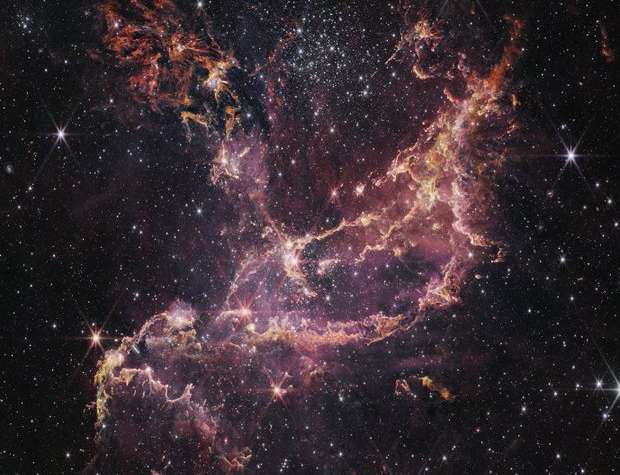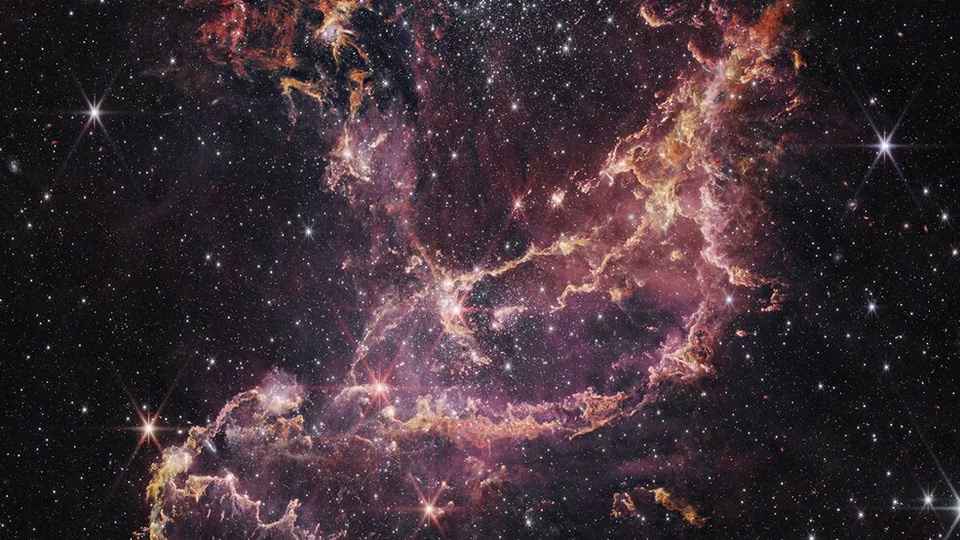The James Webb Telescope has captured an amazing image that could shed light on the early stages of life in the universe

NASA's James Webb Space Telescope (JWST) has released another new image, providing new insights into how stars formed in the early universe more than 10 billion years ago.
The image shows a small group of stars, NGC 346, which is more than 200,000 light-years from Earth.
Located in the Small Magellanic Cloud (SMC) - a dwarf galaxy near the Milky Way - NGC 346 is of interest to astronomers because it resembles conditions in the early universe when star formation was peaking. Astronomers believe that studying this region can help shed light on how the first stars formed during the “cosmic noon,” that is, only two or three billion years after the Big Bang.
The SMC contains lower concentrations of elements heavier than hydrogen or helium, which astronomers call metals, than the Milky Way.
Since dust grains in space are mostly made up of minerals, scientists expected that there would be small amounts of dust and that it would be difficult to detect.
However, new data from Webb reveals the opposite.
It wouldn't have a galaxy at cosmic noon NGC 346 like the Small Magellanic Cloud; It will have thousands of “star-forming regions like this,” said Margaret Mixner, an astronomer with the Universities Space Research Association and principal investigator on the research team. But even if NGC 346 is now the only massive star-forming cluster in its galaxy, it offers us a great opportunity to explore the conditions at the cosmic noon.

NGC 346 includes protostars - clouds of gas and dust in space that develop into stars.
Previous infrared studies of the cluster have focused on protostars five to eight times the mass of our Sun.
Astronomers detected gas around protostars within NGC 346, but Webb's near-infrared observations mark the first time they have also detected dust in these disks.
And because the Small Magellanic Cloud has a similar environment to galaxies during the cosmic noon, it's possible that rocky planets formed much earlier in the universe than we thought.
Source : websites

